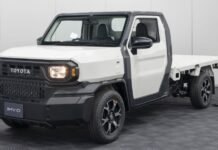How can automakers improve vehicles on the road today in order to meet increasingly challenging fuel efficiency standards that have been set by the government? This was the question a team of experts attempted to answer at the recent New England Motor Press (NEMPA) Technology Conference at MIT in Cambridge, Massachusetts.
Barring any changes, cars and light-duty trucks will need to meet a Corporate Average Fuel Economy Standard of 35.5 MPG by 2016 and 54.5 MPG by 2025. These aren’t small numbers and they’re going to require significant changes in the automotive design process. It’ll take a combination of improved materials, electrification and mass reductions, but exactly how much of each is the question.
David Leone, Cadillac Brand Lead Executive Chief Engineer, talked about how weight is such an issue that it’s not looked at in pounds, but in grams. He spoke of the Cadillac mantra “Every gram. Every Engineer. Every Day.” and how it informs their design decisions throughout the process. The smallest of weight reductions can yield significant mass efficiency improvements and this is essential if fuel efficiency standards are to be met.
He also noted the importance of using new materials like plastic, aluminium and even carbon fibre, which is making its way down from pricey supercars into more affordable vehicles. Combined with these materials changes, there must also be a focus on aerodynamics where again, small changes can result in much greater efficiency.
One of the biggest hurdles isn’t necessarily in the design process, but in making sure that consumers can still afford the costs associated with all these changes. Mike Stanton, President and CEO of Global Automakers, acknowledged that consumers are looking at increased costs of $3000 plus per vehicle once these changes are enacted. We all want greater fuel efficiency, but are we all prepared for the additional cost?
And of course, electric cars will play an important part in the process. Anders Tylman-Mikiewicz, General Manager of the Volvo Monitoring and Concept Center, discussed the viability of electric vehicles. He noted that there are vehicles on the market right now that meet the upcoming fuel efficiency standards and which will easily handle the ranges most drivers need.
The one thing that was clear was that nothing actually is clear. It’ll take a combination of changes to meet the fuel efficiency standards, but what exactly that combination is remains to be seen, as does the public reaction to their increased costs.
 Nicole Wakelin fell in love with cars as a teenager when she got to go for a ride in a Ferrari. It was red and it was fast and that was all that mattered. Game over. She considers things a bit more carefully now, but still has a weakness for fast, beautiful cars. Nicole also writes for NerdApproved and GeekMom.
Nicole Wakelin fell in love with cars as a teenager when she got to go for a ride in a Ferrari. It was red and it was fast and that was all that mattered. Game over. She considers things a bit more carefully now, but still has a weakness for fast, beautiful cars. Nicole also writes for NerdApproved and GeekMom.

























